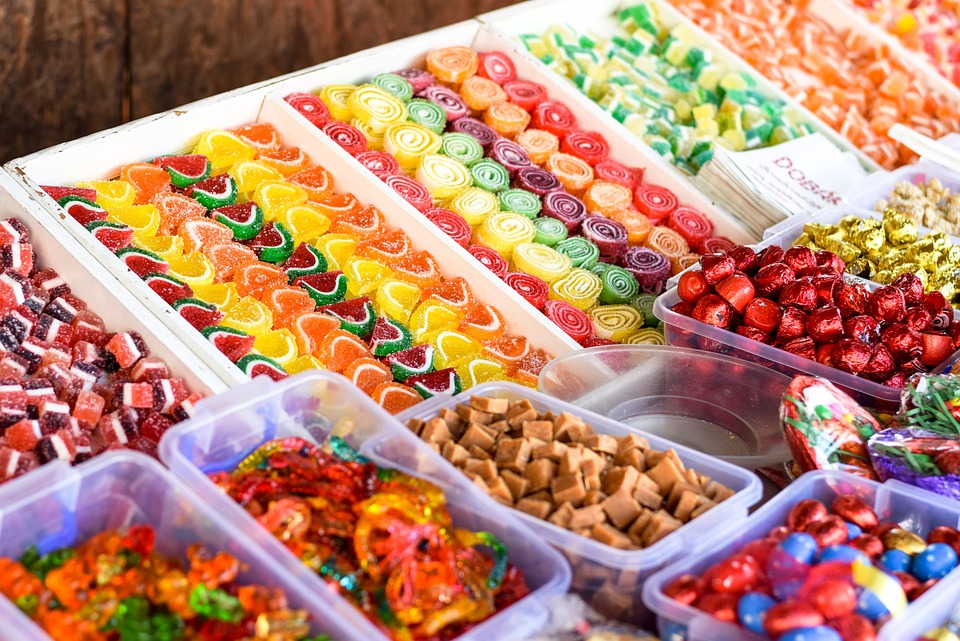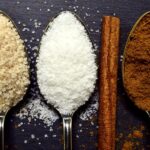You can enjoy sweets as part of a balanced diet, but only in moderation. When moderation turns into frequent sugar cravings, it can indicate a more serious problem. Everyone has sugar cravings, so how do you manage them?
Good news: researchers have looked into sugar cravings and their findings might help you out. You can learn how to control your cravings by understanding why you have them.
Why We Crave Sugar
If you crave sugary foods, you’re not alone. A large percentage of adults experience food cravings. These cravings are often for sugary foods.
Scientists have long believed that cravings for carbohydrates and other sugary foods are driven by a desire to improve mood. The theory is that consuming sweet treats increases serotonin levels in your brain, leading to a happier mood.
Serotonin is a hormone that improves your sense of wellbeing. It is produced in the brain and works as a neurotransmitter.
Although serotonin may be the cause of your food cravings, there are a variety of other potential causes that can also play a factor:
- Emotional stress : If you are experiencing stress at home, on the job, or in your relationships, you may seek comfort from food. Given sugar’s effect on your feel-good hormones, sweet foods are a natural choice when you’re feeling down.
- Macronutrient imbalance : If you eat a diet that is low in protein, healthy fats, and fiber, you may experience blood sugar swings that impact your cravings. For example, if you eat a breakfast that’s high in sugar and low in fiber and protein (such as a donut or pastry), you’re likely to feel hungry again shortly after eating—and your body craves sugar when it wants quick energy.
- Lack of sleep : Scientific studies have determined that a lack of sleep is often followed by an increase in cravings for sweet, salty, and starchy foods. Researchers have also found that we tend to make poor food choices when we’re tired.
- Underconsumption of calories : If you are fasting—or simply not consuming enough calories to meet your body’s needs—your sugar cravings are likely to increase. This is because your body is craving that quick energy.
- High sugar intake : The more sugar you eat on a regular basis, the more sugar your body will crave. Research has shown a strong correlation between typical foods consumed and your preference for that food.
- Frequent use of artificial sweeteners : Zero-calorie sweeteners can alter your sensitivity to sweets, causing you to crave increasing amounts of sugar. Depending on the brand that you use , your artificial sweetener may be anywhere from 200 to 20,000 times sweeter than natural sugar.
- Micronutrient deficiency : Some nutrition experts have suggested that a magnesium deficiency may lead to increased sugar cravings. While there may be some truth to this relationship, the evidence is limited.
Cravings vs. Addiction
If you are experiencing any of the potential causes mentioned, you might be addicted to sugar. Although not all scientists agree, researchers are careful to point out that evidence does not show that sugar is an addictive substance.
You need a strong urge to take a substance to be addicted to it chemically. If you can’t stop using it and suffer withdrawal symptoms when you try to quit, you have an addiction. A sugar addiction can be caused by a dependence on the chemicals that make you feel good when you eat sugar.
It might also be explained as a behavioral addiction. Behavioral addictions are not caused by substances, but by compulsive behavior. Gambling is only officially recognized as a behavioral addiction in the Fifth Edition of the Diagnostic and Statistical Manual of Mental Disorders. Other examples of compulsion include overeating, spending, and playing video games.
It’s important not to view your sugar cravings as an addiction.
Understanding the difference between sugar addiction and sugar cravings may help you kick your sugar habit.
Addictions usually require the assistance of trained professionals to achieve relief. You may find it helpful to get professional support from a nutritionist or registered dietitian when you’re trying to eat less. You can control your sugar cravings by yourself.
How Much Is Too Much?
Avoiding all sugar is not realistic. Sugar from natural sources can be a healthy part of your diet. Avoiding certain foods can lead to binge-eating that food later.
We consume too much sugar, which can have negative consequences for our health.
The United States Department of Agriculture Dietary Guidelines for Americans recommend limiting sugar intake to no more than 10% of your daily calorie intake. Some experts recommend a lower limit for sugar intake of up to 6% of daily calories, as opposed to the current guidelines. This is also supported by the American Heart Association.
You should evaluate your sugar intake and see if it matches the recommendations. Remember that sugar is added to a lot of foods you wouldn’t expect. Some common everyday items that often contain added sugar are bread, peanut butter, spaghetti sauce, and ketchup.
How to Beat Sugar Cravings
1. Incorporate sweet spices as sugar alternatives
An alternative will help your mind think you’re having sugar.
Instead of the usual warm drinks with sugar and syrup, go for sweet spices such as cardamom, coriander, cinnamon, ginger, and Ceylon cinnamon.
If you’re a fan of hot chocolate, you can use a small amount of cocoa powder or unsweetened cocoa mix to sweeten your drink instead of sugar. You can add a bit of Cinnamon or Ginger to your baking to spice it up.
The spices in this category generally have a sweeter taste, but don’t contain any sugar. The addition of these natural sweeteners will give your food a sweet taste without the addition of sugar. Your mind will be tricked into thinking you are eating something sugary when you are not.
2. Swap carbonated drinks for carbonated water
There is nothing that can compare to carbonated water when you are trying to quench your thirst or get rid of a sugar craving. Drinks like soda, sweet tea, and energy drinks that are high in sugar are not good for you. It can be difficult to let go of your anxiety, especially if you are attending parties or in the summer when you want something to calm the heat.
If you want to stop eating sugar, you might want to drink seltzer water instead of carbonated drinks (read the label to make sure there is no sugar added). Drinking seltzer water may cause gastrointestinal disturbances such as bloating and gas, so you may want to avoid it. Instead stick to water, herbal tea, and lemon water.
If you’re looking to spice up your water, try adding some fresh squeezed fruit juice or natural herbs. In addition to sweet spices, you can also add a splash of natural juice like cranberry or cherry juice to give it color.
3. Eat whole foods
Still, wondering how to beat sugar cravings? Quit processed foods! Many processed foods contain table sugar, from sauces and salad dressings to seemingly innocent snacks. When you are trying to stop a sugar craving it is important that you do not eat sugary foods or foods with added sugars. Instead of following a diet that consists of mostly sugar, try one that is made up of whole foods. The natural nutrients found in these healthier options can help to keep your sugar cravings under control.
Whole foods are more filling and satisfying than sugary foods, so you’re less likely to crave them. They also tend to be more nutrient-rich, so you’ll get the vitamins and minerals your body needs to function properly. When you eat fresh foods, your body gets a variety of nutrients that are more easily absorbed than empty calories. When you eat whole foods, you will feel more satisfied and won’t have sugar cravings as often. Eating fresh fruits and vegetables has been linked to not wanting processed, sugary junk food. If you want to stop craving sugar, eat more real food.
4. Avoid simple carbohydrates
Are you still wondering how to beat sugar cravings? Quit processed foods!
Processed foods often contain table sugar, even in items that seem innocuous, like sauces, salad dressings, and snacks. When you are trying to stop a sugar craving, you should avoid sugary foods or foods that have added sugar. If you find yourself constantly craving sugar, try switching to a diet focused on whole foods. Healthy options containing natural nutrients can help to stop sugar cravings.
Eating whole foods beats sugar cravings in a number of ways. When you eat fresh foods, your body gets a variety of nutrients that it can absorb that are more beneficial than just empty calories. Whole foods also tend to be more satisfying, so you’ll eat less without even thinking about it. This is often where sugar cravings come from in the first place. Consuming a diet mainly consisting of fresh fruits and vegetables has been linked with not having a strong craving for unhealthy, sugary snacks. If you want to reduce your sugar cravings, eat real food!
5. Eat protein and fat with every meal
Protein and fat take longer to digest, making you feel fuller for longer and helping to control sugar cravings. Eating a small amount of nuts or trail mix when you have a strong craving for sugar can be very helpful. It is not advised to snack on sugary sweets as it will only cause more problems. Stick with fruit or yogurt. If you want something sweet, eat fresh or frozen fruit instead of canned fruit. You’ll get less added sugar that way.
6. Go cold-turkey
Although the first few days can be challenging, eliminating any form of simple sugars, including artificial sweeteners, can help you manage your cravings.
This method is most effective when you have someone to hold you accountable, especially in the beginning. Find someone who is interested in giving up sugar for ten days and use it as a way to challenge each other.
If you stick with it for ten days, your taste buds will adjust and you’ll crave something else.
7. Cut off energy drinks and fruit juices except for green vegetable juice.
When you juice something, all the fiber is removed. This means that sugar will be released into your body more quickly, leading to a spike in blood sugar levels. This means you will also experience the other benefits of the fruit.
Fruit juice and energy drinks cause a sudden increase in blood sugar levels, followed by a sudden decrease. This is because these drinks have no fiber to slow the release of sugar into the bloodstream. This will cause the pancreas to release insulin, which will remove sugar from the blood, causing a drop in blood sugar levels and a subsequent craving for more sugar.
8. Manage your stress
If you are stressed, the hormone cortisol rises. This causes you to feel hungry and crave sugary foods.
Eating high-fiber plant-based foods can help you stress less and feel fuller longer, preventing cravings. Good options include green peas, flaxseed, pistachios, kale, broccoli, almonds, berries, and sesame seeds.
9. Get enough sleep
If you clock in less than eight hours of sleep a day, you’re more likely to be driven to overeat because your hunger hormones are increased. Substances like caffeine and alcohol can prevent you from getting a good night’s sleep.
There are a few plant-based foods that can help improve your sleep. These include chamomile tea, tart cherries, tart cherry juice, seeds, and kiwi.
Craving is a good indication that something is missing. There are a few different things that can cause you to crave sugar, including brain conditioning, mineral deficiency, blood glucose imbalance, inadequate sleep, and high-stress levels. You should examine the reasons why you have cravings and take steps to address them. With time the cravings will fade off.
10. Practice healthy habits in the morning
I find that if I start my day off with healthy habits, I’m less likely to have sugar cravings later on. If you want to be successful, you should start your day by eating a nutritious breakfast, getting some exercise, and making a plan for the day. This will help you avoid eating too many calories later on.
ur workplace, at home, or at school. Put your own wellbeing first and don’t hesitate to ask for assistance when you need it.
Tracking Intake
So how do you track your sugar intake? A good way to make sure a food is healthy is to look at the ingredients label. If an ingredient ends in “-ose,” it is a sugar. For example, maltose and sucrose are both sugars.
Other than table sugar, there are many other ingredients that are actually sugars, such as natural maple syrup, raw honey, organic cane sugar, molasses, and fruit juice. Most of the time, you will need to use your detective skills to keep track of how much added sugar you are eating.



